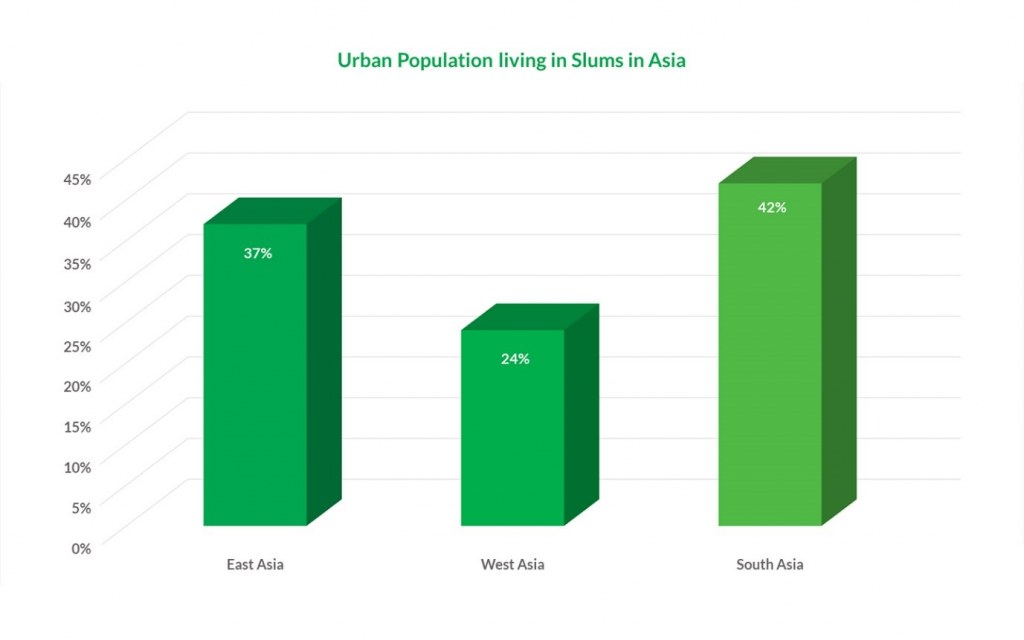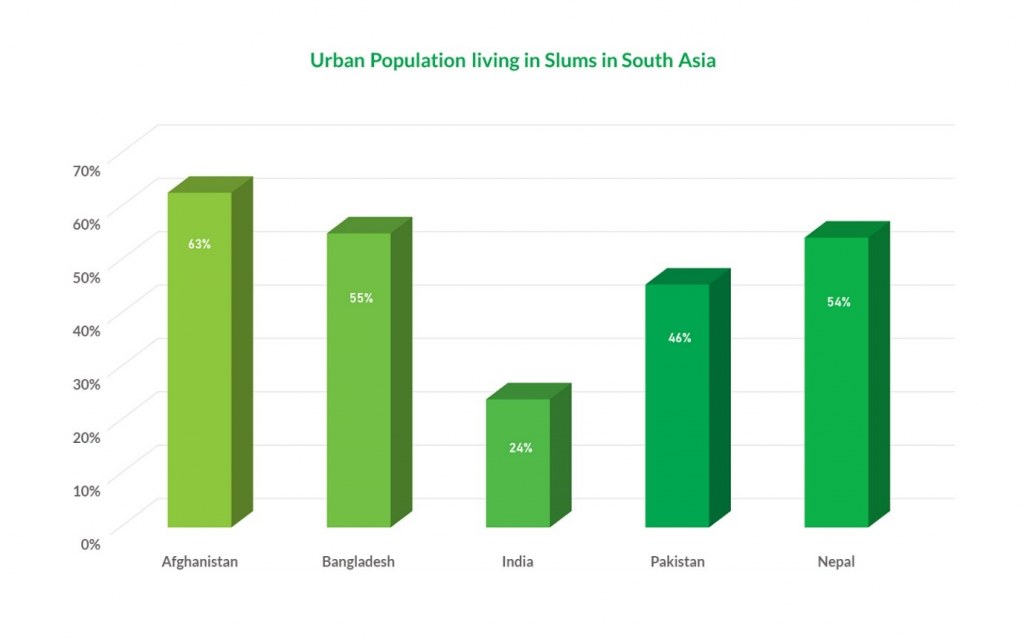Home » Construction » Slum Proliferation: Part 1 Why do slums exist?
Living in an urban city of South Asia, one often comes across small informal settlements under overhead bridges or along railway lines. These settlements are slums; overcrowded urban streets inhabited by the poor. Slums often take the form of either kacchi abaadis or poorly built concrete structures that do not meet habitable living standards.
According to some sources, one-third of the Asian world lives in slums. Pakistan is a big contributor to this fraction, with half of its urban population living in them. Since these are informal settlements with poor living conditions, slums have long term effects on urban development, standards of living and public service delivery.

Slums are becoming an urgent concern for countries with a growing younger population because it corresponds to a growing number of independent households. Simultaneously, with a high rural to urban migration rate at 3% (highest in South Asia), Pakistan is looking at a future where more than half of its population will be living in urban cities by 2030.
This increasing trend of urbanization has expanded the housing demand to a great extent. The supply of housing, however, is inadequate to meet this growing demand.

The current estimates show that Pakistan has a housing shortage of between 8-12 million units. Around 60% of this shortage comes from urban centers. Taking a closer look, it can be seen that this estimate is understated as it assumed that every house on the market is affordable by everyone. Unfortunately, that is not the case in Pakistan.
The majority of the housing supply is accessible only to the middle- or high-income households, hence targeting the proportion of the population that already has houses. As a result, many low- and lower-middle-income households have been forced into informal settlements thus, forming slums.
There are several reasons for this shortage in the lower-income segment:
- The supply of housing is beyond the affordable price range for the low- and lower-middle-income, with over 55 million people living under the poverty line (approximately Rs. 290 per day).
- The lowest income quartile is most in need of decent housing but they are also the ones with the largest household sizes, averaging at 8.2 members per household.
- A lack of decent housing and the absence of housing finance has led to substandard houses and the proliferation of slums.
To find a detailed discussion on the first point, refer to the series “Understanding Low-Cost Housing Initiative in Pakistan”.
It is to be noted that with an average household size of 8.2 members, there needs to be enough space to comfortably accommodate everyone. According to the U.S Department of Housing, if there are more than 2 persons-per-bedroom, the house is considered to be overcrowded. With this standard in mind, it can be concluded that on average, the low-income segment of Pakistan needs at least a 4-bedroom house to call it a decent living. Unfortunately, many of these households spend their lives in one or two, poorly built rooms.
Lastly, in countries where housing finance does not exist or is not readily available, people spend their whole lives trying to build a house in their name. They save up using informal saving methods, and use those savings to buy a house or settle for low-quality housing which results in the proliferation of slums.
Slums exist in all countries of South Asia, as it can be seen in the chart above. However, countries like India and Bangladesh are working towards reducing the proliferation of slums and looking for innovative solutions for this problem. A similar approach needs to be adopted by Pakistan’s policymakers and academics to curb this growing problem.
In part 2 of this series, we will discuss the solutions employed by countries in the region while casting light on the solutions proposed by Pakistan.



